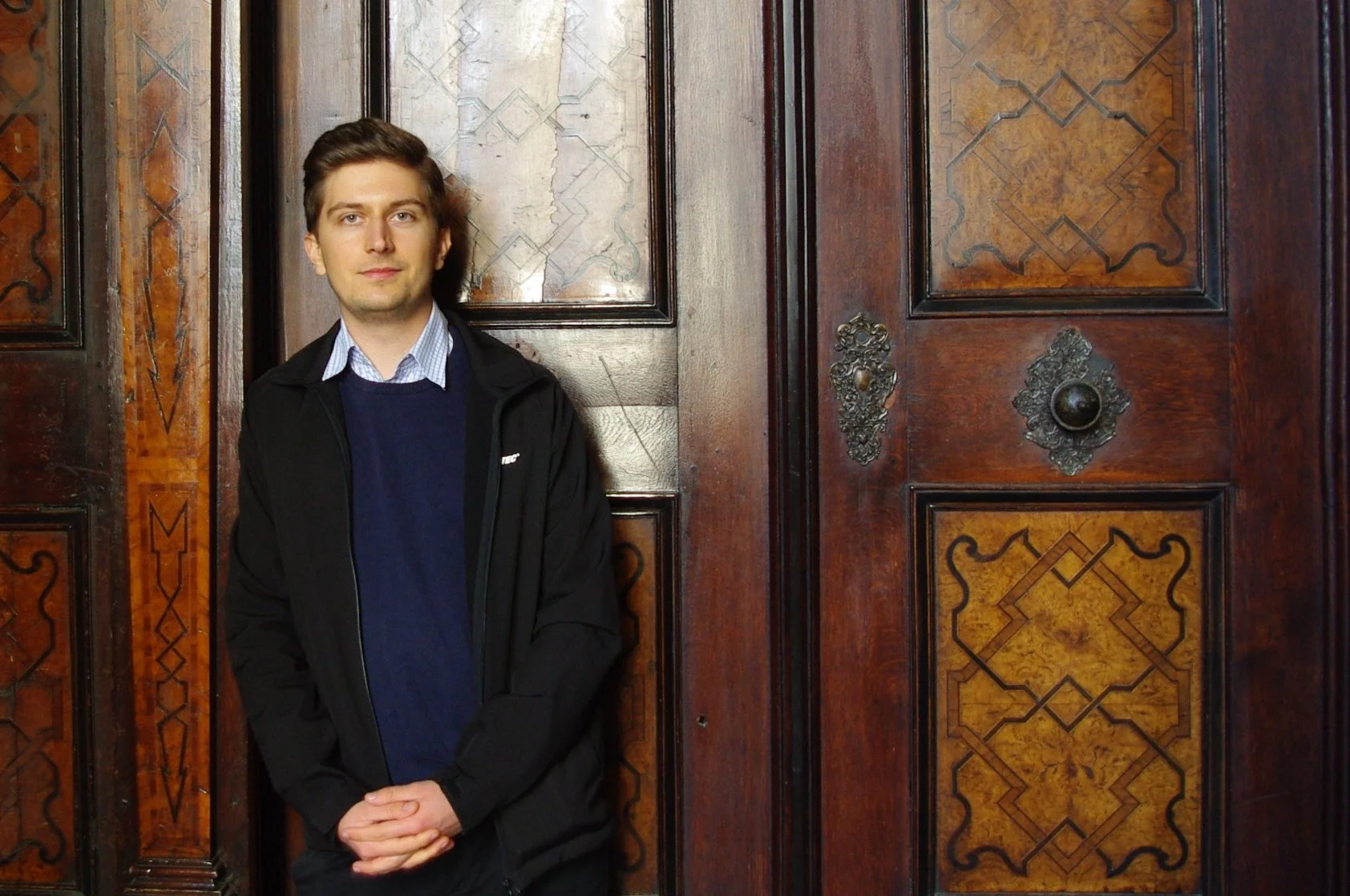
Wrocław ‘University’ Pharmacy at the… Sackler Bastion (1859-1945)
The pharmacy that formerly operated on the site of the University of Wrocław has been attracting great interest for years. The room in which it had its seat is now part of the main building. The fact that it remains inaccessible to the public undoubtedly contributes to the aura of mystery that has grown up around this facility.
Information can easily be found about the Jesuit pharmacy itself operating in the Leopoldina[1]. Its origins date back to 1753, when it was opened at ul. Kuźnicza 35. However, it was soon moved to what is now the main building of the University of Wrocław[2]. The window in the Imperial Gate, which several hundred years ago was used to dispense preparations quickly to those in need, is now bricked up. It is, however, a visible trace of its activities and stimulates the imagination of residents walking around pl. Uniwersytecki.
In 1773, the Jesuit order was dissolved. The suppression – unsurprisingly – affected the further fate of the pharmacy. After the establishment of the University (1811), it was the property of the university and performed training functions[3]. In 1843, the administration of the pharmacy was taken over by Adolf Ferdinand Duflos, a well-known professor, chemist and pharmacist (a plaque commemorating his services is located in Kudowa-Zdrój).
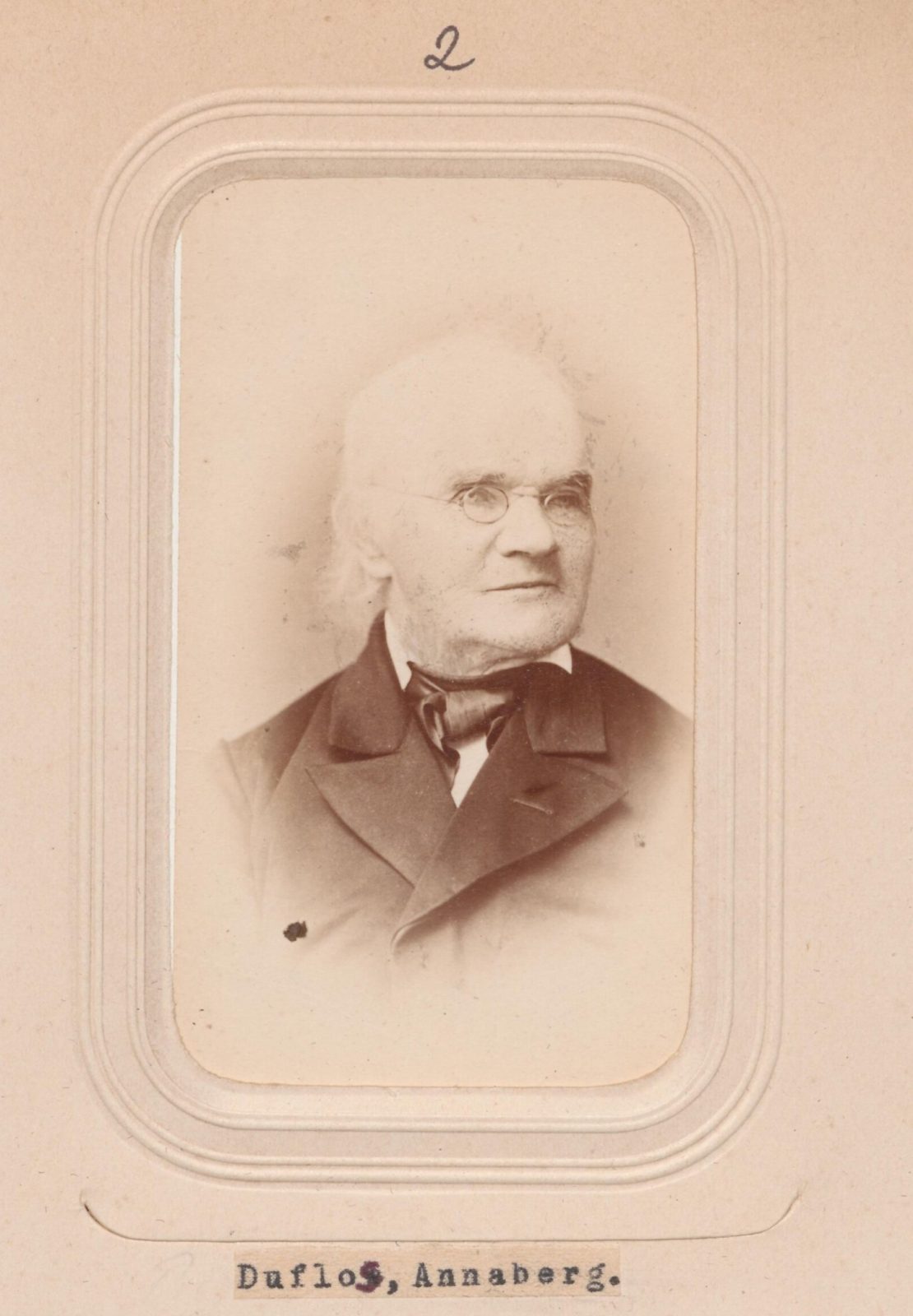
In 1859, the pharmacy was purchased by Carl Skyde, which marked the beginning of a new period in its operation, as it was moved to the vicinity of the Sackler Bastion[4]. Since then, its history no longer evokes so much emotion and therefore does not function sufficiently in the public consciousness. This is probably influenced by the ‘stripping’ of the pharmacy of its original character and location in the city centre, as well as the interruption of its mythical, Jesuit and university character. This is all the more reason why I think it is worth leaning into its 19th and 20th century fate and understanding why it disappeared from the city map.
After the takeover, which took place in 1859, the pharmacy was reopened on Taschenstraße 20 (now ul. Fr. Piotr Skargi). It changed hands due to financial problems of the owners and numerous disagreements. It belonged to L. Wachsmann (twice!), F. Bachmann, J. Wüstefeld. The pharmacy did not operate for long at the aforementioned address, as Wüstefeld moved it to Taschenstraße 25 as early as 1880, i.e. only 21 years after it was first re-located. From surviving sources, it is known that at that time the outlet was used as a homeopathic pharmacy[5]. In the 1870s it was said to have ‘the largest selection of homeopathic home, travel and pocket pharmacies’[6]. Residents of Wrocław (at that time “Breslau”) could also go to the address to have their urine examined[7].
![Źródło: „Schlesische Zeitung” 4 Mai 1865, Jg. 124, nr 207, s. [10].](https://uwr.edu.pl/wp-content/uploads/2025/01/Obraz2Schleschise.png)
![Źródło: „Schlesische Zeitung” 29 Juni 1870, Jg. 129, nr 296, s. [4].](https://uwr.edu.pl/wp-content/uploads/2025/01/Obraz3.png)
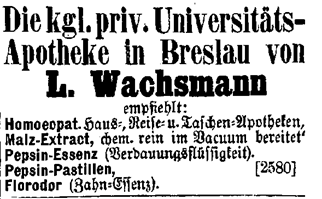
The last phase of the pharmacy’s operation, that is, the time from its relocation to its decommissioning, seems to have been the most turbulent. In 1890 it was sold to J. Adam, and from 1 January 1905 it belonged to R. Hochmuth[8]. In 1913. – a year before the outbreak of the First World War – it was taken over by Paul Matuschek. He was associated with Upper Silesia, where he had previously run another pharmacy. Thanks to the considerable wealth at the disposal of his wife and her family, the financial condition of the pharmacist was more than good and probably allowed him to manage a pharmacy in Breslau. ‘He runs a good, profitable business in which he mainly employs 4 assistants. His financial situation is assessed as good.’ – wrote one report[9]. In 1918 he was drafted into the army, so later that year the pharmacy was sold to Erich Haucke. Initially, the new owner was approached with some caution. This was probably due to his previous failure to run another pharmacy. The situation was not improved by the fact that he was a divorcee and had made the down payment to buy the pharmacy with the support of his family. ‘Although he has taken over a profitable business, it is unclear how it will turn out.’ – wrote reports[10]. However, it soon became apparent that the establishment was well managed and that Haucke himself was a reliable and solid owner. In 1928, David Gramse took over the pharmacy. The creditworthiness reports at the time stated: ‘The pharmacy is conveniently located in a busy street and we hear that the business is profitable. The owner is an enterprising, intelligent man who organises his business carefully and carries out his duties properly. The company’s position is secure.”[11] Gamse, because of his background (for he was Jewish[12]), quickly became the target of state authorities. He later faced numerous unpleasantness for this. On 1 October 1936, Heinz Druckmüller took over the pharmacy. The replacement of David Gramse became known to the readers of a local newspaper, which wrote that the pharmacy had been taken over by ‘a new Aryan owner’[13], which remains the best testimony to the attitude towards a Jewish pharmacist of the time.
![Źródło: „Schlesische Zeitung” 4 Oktober 1936, Jg. 195, nr 504, s. [12].](https://uwr.edu.pl/wp-content/uploads/2025/01/Obraz5.png)
The last owner of the pharmacy was Waldemar Pelz, who took over in 1938. Not much is known about his activities in Wrocław, but he must have distinguished himself in the war effort, as he was awarded the Iron Cross Second Class in 1940. At the time, Pelz was an apothecary operating as part of one of the armoured corps[14]. It is not clear whether he entrusted someone with the management of the pharmacy during the war or held this position himself – according to available studies, he was the last owner of the ‘Universitäts-Apotheke’. In 1944. Breslau, along with other cities of the Third Reich, was declared a fortress. Although initially this state of affairs did not significantly affect the work of pharmacies, changes came at the beginning of 1945. The advancing offensive of the Red Army forced the authorities to take measures to consolidate pharmacy premises and reorganise their operations. Out of the initial more than 70 pharmacies that operated in Wrocław, only 14 were functioning in February 1945[15]. The ‘Universitäts-Apotheke’ was missing among them, which suggests that it was closed down. It is likely that Waldemar Pelz was in charge of the establishment until the end, but at this stage of research it has not been possible to find evidence of whether he remained in the fortress and provided pharmaceutical services in another pharmacy in Breslau. However, there is no doubt that he survived the war, as he took charge of a pharmacy in Halle in October 1945[16].
When Waldemar Pelz left Breslau, he also ‘orphaned’ the ‘Universitäts-Apotheke’. The fate of the institution in its declining years remains unknown. Due to its location, it was probably destroyed in one of the air raids on the city. The area around the present-day pl. Dominikansky suffered heavily during the declining years of World War II, as can be seen in the modern buildings in the area. Today, a hotel stands on the site of the former ‘Universitäts-Apotheke’ (actually at its last address). It has blended into the development of ul. ks. Piotra Skargi, merging with the nearby Lyceum IX building and residential buildings. There are no traces in the urban space that can testify to the former history of this place, and few inhabitants of Wrocław know of its existence. This makes it all the more important and justified to recall the complicated history of the pharmacy, which was inextricably linked to the University of Wrocław, the first step of which is the present text.
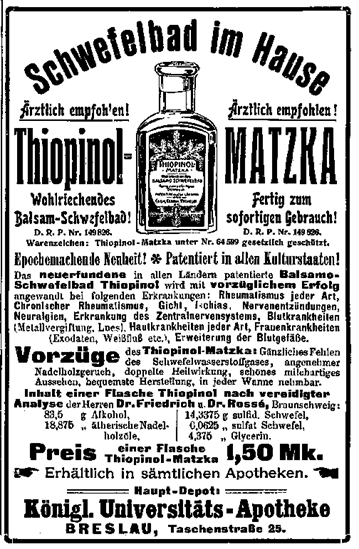
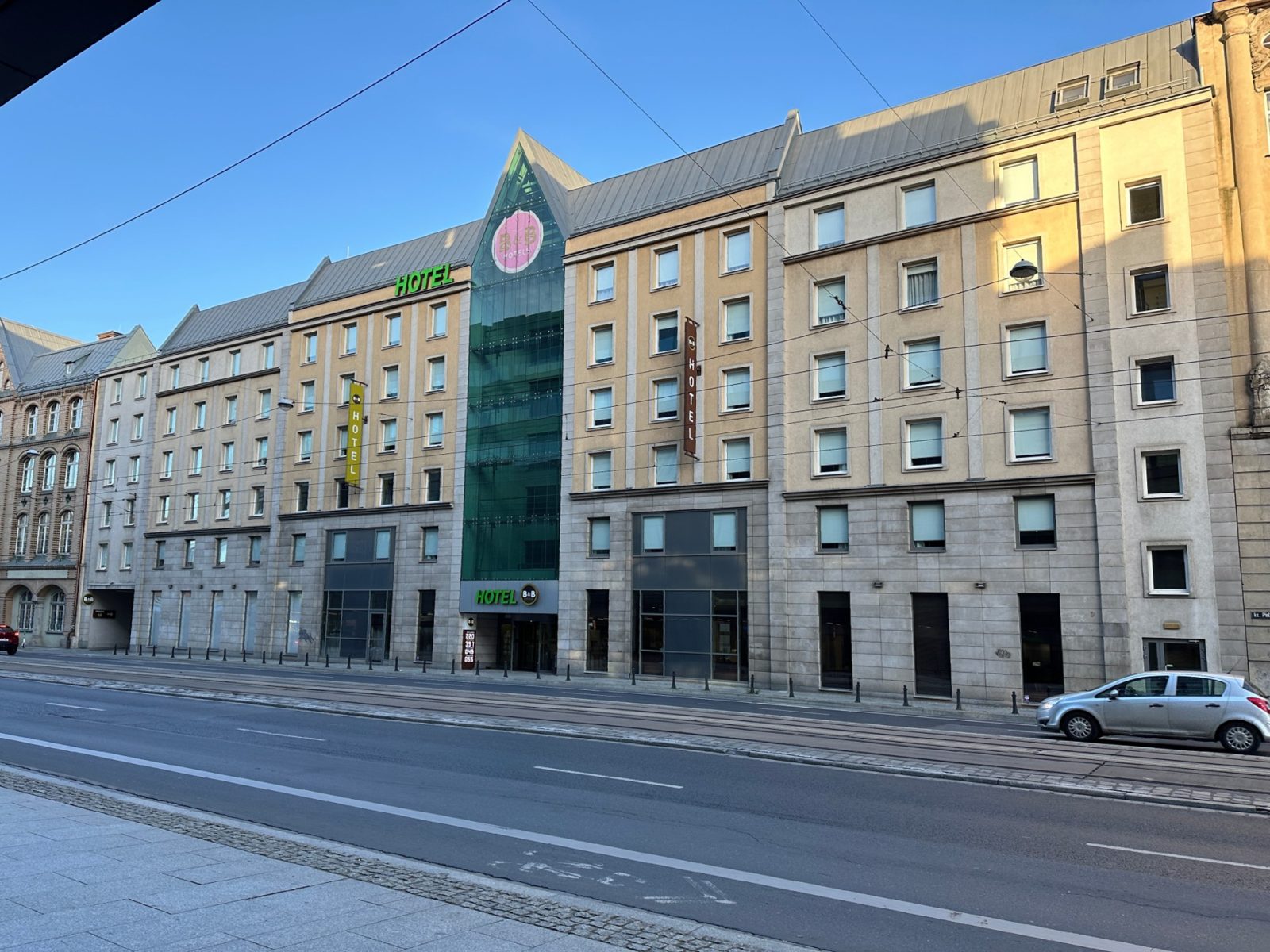
Footnotes:
[1] See also: https://www.wroclaw.pl/dla-mieszkanca/nieznany-wroclaw-apteka-uniwersytet [access: 19 IX 2024]
[2] Andrzej Syroka, Apteka „Uniwersytecka”, [in:] Encyklopedia Wrocławia, ed. Jan Harasimowicz, Wrocław 2001, p. 35.
[3] Ibidem.
[4] Wilhelm Brachmann, Beiträge zur Apothekengeschichte Schlesiens, Würzburg 1966 (Beihefte zum Jahrbuch der Schlesischen Friedrich-Wilhelms-Universität zu Breslau, 5), p. 64–65.
[5] Amtliches Landes-Adressbuch der Provinz Niederschlesien für Industrie, Handel, Gewerbe 1927, Herausgegeben durch den Verlag August Scherl, Deutsche Adreßbuch-Gesellschaft m. b. H., Breslau 1927, p. 95.
[6] „Breslauer Zeitung”, 29 März 1871, Jg. 52, No. 149, p. 1109.
[7] Amtliches Landes-Adressbuch…, p. 95.
[8] W. Brachmann, op. cit., p. 65.
[9] Archiwum Państwowe we Wrocławiu Oddział w Kamieńcu Ząbkowickim [dalej: APWrOKZ], sygn. 635/0/1.1.1/14275, k. 5.
[10] APWrOKZ, sygn. 635/0/1.1.1/14275, k. 1.
[11] APWrOKZ, sygn. 635/0/1.1.1/13720, k. 1
[12] Centralna Biblioteka Judaistyczna, Gmina Żydowska we Wrocławiu, sygn. 105/81 [Mitgliederverzeichnis (alphabetisch nach Straßen mit Angabe von Name, Beruf, Geburtsdatum)], k. 440.
[13] „Schlesische Zeitung” 4 Oktober 1936, Jg. 195, no. 504, p. [12].
[14] „Süddeutsche Apotheker-Zeitung” 24 August 1940, Jg. 80, no. 68, p. [4].
[15] Kacper Rosner-Leszczyński, „Zamknięte, uszkodzenia spowodowane nalotem”. Działalność aptek w Festung Breslau (I 1945 – V 1945), Śląski Kwartalnik Historyczny »Sobótka«, Yearbook LXXVII (2022), no. 2, p. 124.
[16] Hans-Joachim Poeckern, Halles Apotheken. Eine Geschichtsbetrachtung, Leipzig-Weissenfels 2004, p. 263.
Bibliography:
Published and archival sources:
Archiwum Państwowe we Wrocławiu Oddział w Kamieńcu Ząbkowickim, sygn. 635/0/1.1.1/13720, 14275.
Archiwum Uniwersytetu Wrocławskiego, sygn. PL 372 1-0-1-SG_I(Album z okazji 50-lecia pracy J.G. Galle, 1884).
Centralna Biblioteka Judaistyczna, Gmina Żydowska we Wrocławiu, sygn. 105/81 [Mitgliederverzeichnis (alphabetisch nach Straßen mit Angabe von Name, Beruf, Geburtsdatum)].
Amtliches Landes-Adressbuch der Provinz Niederschlesien für Industrie, Handel, Gewerbe 1927, Herausgegeben durch den Verlag August Scherl, Deutsche Adreßbuch-Gesellschaft m. b. H., Breslau 1927.
Press:
„Breslauer Zeitung” 1871–1873.
„Schlesische Ärzte-Korrespondenz” 1905.
„Schlesische Zeitung” 1865–1866, 1936.
„Süddeutsche Apotheker-Zeitung” 1940.
Elaborations:
Brachmann Wilhelm, Beiträge zur Apothekengeschichte Schlesiens, Würzburg 1966 (Beihefte zum Jahrbuch der Schlesischen Friedrich-Wilhelms-Universität zu Breslau, 5).
Poeckern Hans-Joachim, Halles Apotheken. Eine Geschichtsbetrachtung, Leipzig-Weissenfels 2004.
Rosner-Leszczyński Kacper, „Zamknięte, uszkodzenia spowodowane nalotem”. Działalność aptek w Festung Breslau (I 1945 – V 1945), Śląski Kwartalnik Historyczny »Sobótka«, Yearbook LXXVII (2022), no. 2, pp. 117–137.
Syroka Andrzej, Apteka „Uniwersytecka”, [in:] Encyklopedia Wrocławia, ed. Jan Harasimowicz, Wrocław 2001, p. 35.
Netography:
https://www.wroclaw.pl/dla-mieszkanca/nieznany-wroclaw-apteka-uniwersytet [access: 19 IX 2024]
Author: Kacper Rozner-Leszczyński
Date of publication: 23.01.2025
Added by: M.J.



